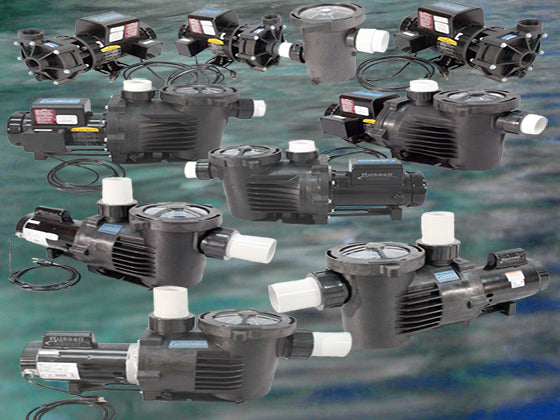
Why is Metabolization Rates of Biological Filters Important Information?
Koi and pond fish produce ammonia and waste in proportion to their weight. Nitrifying bacteria in your biological filtration system process ammonia and waste in proportion to their mass. Therefore it is critical for the health of your koi and pond fish to know how much ammonia and waste your biological filtration system can process. You can calculate how much fish waste your biological filtration system can process by calculating the system's Specific Surface Area (SSA). The SSA will tell you how much biofilm your system effectively has, and your biofilm processes waste in direct proportion to the actual size of the biofilm. The following Metabolization Rates are widely accepted as Industry Standard and apply equally to any, and all types, and brands of biological filters and their media.
Fish Waste
Ammonia
Fish Weight
Fish Weight and Water Volume
Fish Food
How much fish waste can your filter metabolize in 24 hours?
Nitrifying Bacteria bio film inside biological filters metabolize an average .2 grams of fish waste per square of bio film, measured as Specific Surface Area (SSA), per day. (.2 to 1 ratio)
Fish Waste
Total Biofilm SSA x .20 = Total grams of fish waste the biofilter
can metabolize in 24 hours
What is Specific Surface Area (SSA), and Why is it Important?
Example: 100 sq. ft. media Specific Surface Area (SSA) processes 20 grams of fish waste per day. (100 x .20 = 20)
The Ahi Hydro Vortex™ filter has 677 square feet of Specific Surface Area (SSA):
(677 x .20 = 135.4), thus the Ahi with its 677 SSA of biofilm can metabolize 135.40 grams of fish waste per day.
How much ammonia can your biofilter metabolize in 24 hours?
50 sq. ft. of Nitrifying Bacteria biofilm Specific Surface Area (SSA) metabolizes 1 gram of ammonia per day. (50 to 1 ratio)
Ammonia
Total SSA / 50 = Total grams of ammonia the filter can metabolize in 24 hours
Example: 100 sq. ft. Nitrifying Bacteria biofilm Specific Surface Area (SSA) metabolizes 2 grams of ammonia per day.
(100 divided by 50 = 2)
The Ahi Hydro Vortex™ filter has 677 square feet of Specific Surface Area (SSA): (677 / 50 = 13.54) thus the Ahi with its 677 SSA can metabolize 13.54 grams of ammonia per day.
Fish excrete .1 gram ammonia through their gills per 1,000 grams of body weight per day.
Example: 500 grams of fish excrete .05 grams of ammonia per day.
Back to List
Top
How much fish weight can your biofilter effectively support?
Koi and pond fish produce 1/3 of their body weight in waste per day. A 30 gram fish produces 10 grams of waste per day (on average). So, if you know how much fish waste your biological filtration system can process, you'll be able to calculate how much fish, by weight, it can effectively support.
1 gram of fish waste is produced from 3 grams of fish.
(1 to 3 ratio)
If you've calculated that your biological filtration system (by Total SSA) can process 10 grams of fish weight - simply multiple that by 3 to accurately calculate how much fish, by weight, will produce 10 grams of waste. 10 x 3 = 30.
Total grams of fish waste x 3 = Total grams of fish weight the filter can support
Example: 100 grams of fish waste is created from 300 grams of fish. (100 x 3 = 300)
The Ahi Hydro Vortex™ filter with its 677 SSA can metabolize 135.40 grams of fish waste, thus the Ahi can support 406.20 grams of total combined fish weight. (135.40 x 3 = 406.20)
Fish Weights and Length
Back to List
Top
How much fish weight can your water volume effectively support?
Koi and pond fish produce waste in proportion to their weight. They produce 1/3 of their body weight in waste per day. Water dilutes fish waste. A given amount of fish waste in differing volumes of water will have a different toxicity levels. The more water, the less toxic the waste will be, therefore a "fish weight adjustment" can be factored in. When calculating the fish weight for a given amount of fish you need to consider the SSA of the biological filtration systems AND the total volume of water.
The 1,000 Gallon Factor
The Fish Weight Water Volume Adjustment Multiplier is Fish Weight x 1.1 Per 1,000 Gallons of Water in the System
Total grams of fish weight x 1.1 per 1,000 gallons of pond water = Total grams of fish weight the filter, pond, and water volume can effectively support
Example: SSA of 1,200 can support 720 grams of fish weight. The water volume is 1,830 gallons. Multiply 720 by 1.183 for an adjusted for water volume total fish weight of 851.76 total grams of fish weight.
Back to List
Top
How much fish food do you give your fish per day?
Koi and pond fish consume 2% - 5%, or an average of 3.5%, of their total body weight per day. Once you've calculated the total fish load, by weight, your pond and filtration system can effectively support, you can easily calculate how much food you can feed your fish without overloading your filtration system.
Total grams of fish weight x .035 = Total grams of fish food you can feed your fish per day without overloading your biological filtration system.
Example: 100 grams of fish eat up to 3.5 grams of food per day. (100 x .035 = 3.5)
The Ahi Hydro Vortex™ filter can support 203.10 grams of total combined fish weight, thus; 203.10 x .035 = 7.11 grams of fish food can be fed to the fish daily.
For further information on fish feeding rates go to: www.akca.org/library/feed2.htm
Back to List
Top
1 pound of fish food = 453.60 grams of fish food
Fish excrete .1 gram ammonia through their gills per 1,000 grams of body weight per day.
Example: 500 grams of fish excrete .05 grams of ammonia per day.
Fish stress at .0635 grams of ammonia per 1,000 gallons of water.
What is Specific Surface Area (SSA), and Why is it Important?
Filter Media Specific Surface Area (SSA) Charts
Fish Weights and Length
Partial Source List:
www.akca.org/library/feed2.htm
www.fishdoc.co.uk/koi/koinitrogen.htm
www.fishdoc.co.uk/filtration/koi1pollution.htm
www.sfbakc.org/koienews/surface.html






































